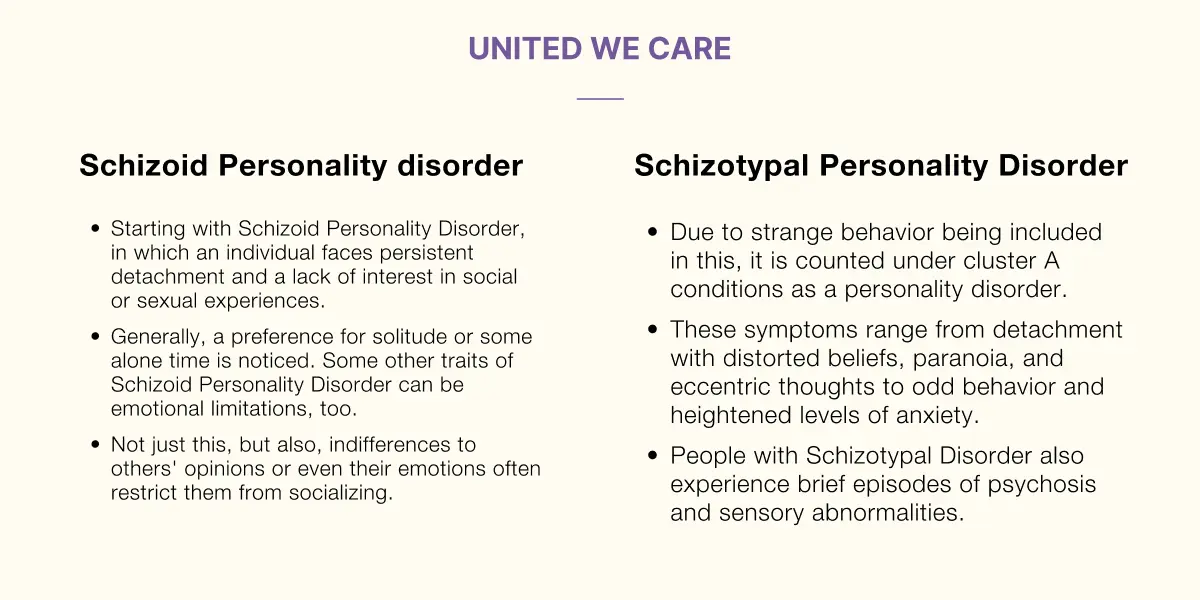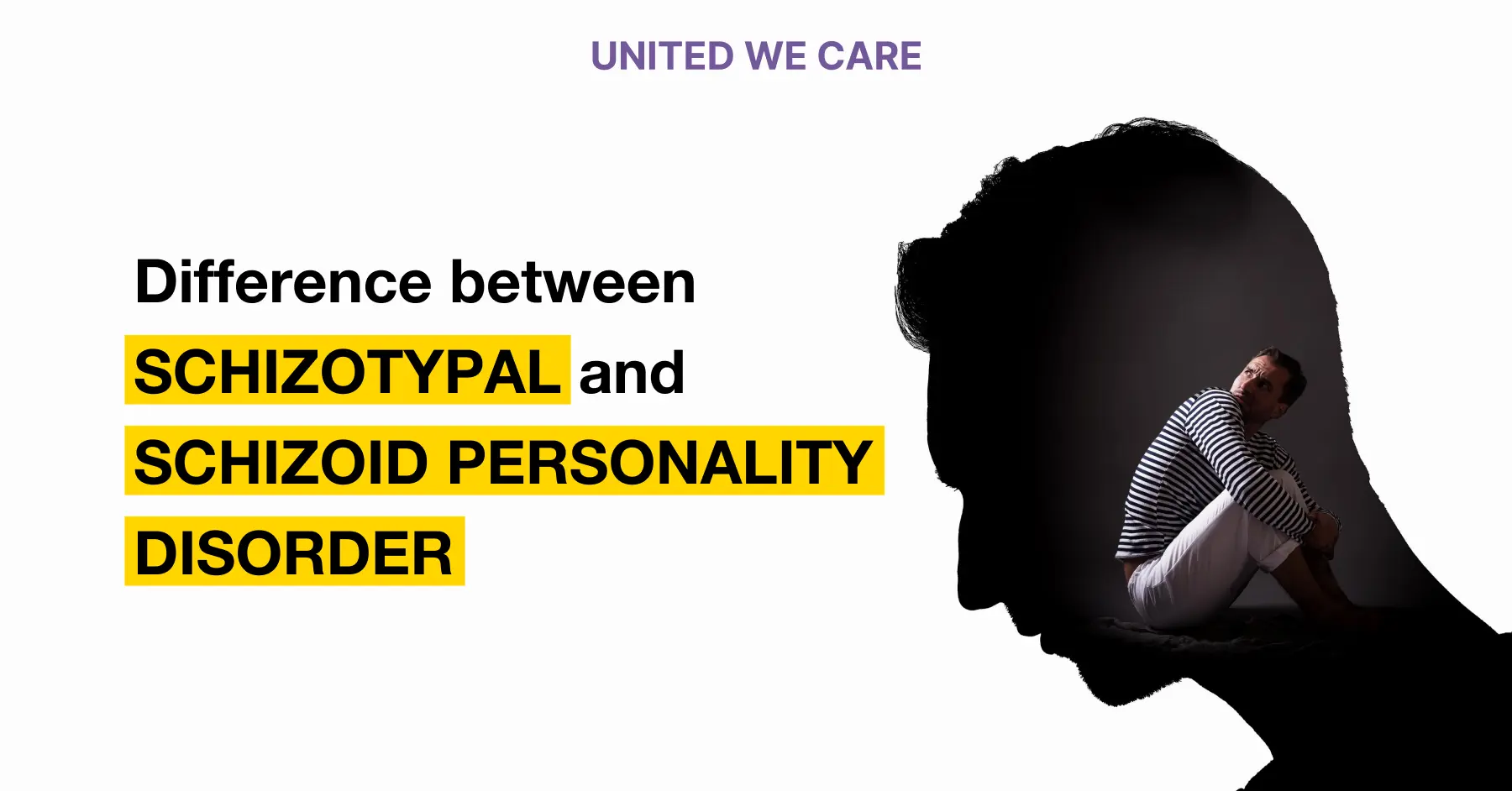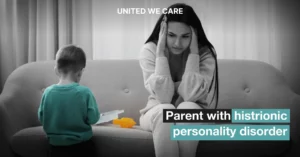Introduction
Schizoid and Schizotypal are two types of personality disorders that need to be differentiated between. It is very crucial to differentiate between these two due to their distinct characteristics and symptoms when diagnosed. Understanding what these disorders are, their symptoms, and how to treat them is essential, so let’s get on with it.
What is Schizoid and Schizotypal Personality
Now let’s see the difference between Schizoid and Schizotypal Personality disorders. Firstly, let’s understand what Schizoid Personality Disorder is. Schizoid Personality Disorder can be defined as a dislike of relationships and a preference for solitude.
An individual with a Schizoid Personality will have a limited range of emotions. Furthermore, people who suffer from Schizoid Personality Disorder often find it hard to form or maintain connections. It should be noted that this happens due to their emotional constraints and desire for solitude.
Similarly, Schizotypal Personality Disorder involves more than just detachment. It also includes unusual ways of thinking that usually go way beyond emotional distance. Secondly, individuals with Schizotypal Personalities usually experience high levels of anxiety, strange behavior, and odd beliefs. They also sometimes get brief episodes of psychosis, which complicates their situation even more. All these issues combined make it hard for Schizotypal individuals to have social interactions and keep relationships.
Symptoms of Schizoid and Schizotypal Personality
It is important that in order to diagnose, one should understand the symptoms as well. Let’s talk about the symptoms of especially these two personality disorders.
- Starting with Schizoid Personality Disorder, in which an individual faces persistent detachment and a lack of interest in social or sexual experiences.
- Generally, a preference for solitude or some alone time is noticed. Some other traits of Schizoid Personality Disorder can be emotional limitations, too.
- Not just this, but also, indifferences to others’ opinions or even their emotions often restrict them from socializing.
Coming to Schizotypal Personality Disorder, individuals with this disorder have an array of symptoms.
- Due to strange behavior being included in this, it is counted under cluster A conditions as a personality disorder.
- These symptoms range from detachment with distorted beliefs, paranoia, and eccentric thoughts to odd behavior and heightened levels of anxiety.
- People with Schizotypal Disorder also experience brief episodes of psychosis and sensory abnormalities.
Difference between Schizoid and Schizotypal Personality Disorder

Here, let’s talk about what their differences are and how to distinguish between them when compared. There are some major differences an individual can notice between Schizoid and Schizotypal personalities. In Schizoid personality disorder, individuals typically show a lack of concern towards their condition. It should be noted that they are often found to be comfortable with their conditions. Whereas people with Schizotypal personalities often seek treatment or solutions for their problems. They seek treatment due to the distress caused by their relationship struggles.
Meanwhile, on the behavioral aspect, people suffering from Schizoid Personality Disorder often have a limited range of emotions. Also, these individuals are less outwardly distinct. On the other hand, people with Schizotypal Personality Disorder usually show eccentric and odd behavioral patterns. This just makes them stand out a lot in social settings. Moreover, some behaviors might just look like a symptom before but can lead to an impact on important areas of function generation.
How to Deal with Schizoid and Schizotypal Personality Disorder
Finally, let’s understand how Schizoid and Schizotypal can be treated and possibly cured. Initially, treatment for Schizoid Personality often involves talk therapy that can challenge beliefs about relationships. Moreover, medications are used to address anxiety or depression that can be associated with the disorder. Whereas, for Schizotypal Personality Disorder, Cognitive Behavioural Therapy can be used to improve communication and challenge distorted thoughts. In addition to the therapy, the usage of antipsychotics and antidepressant medication is also suggested to bring down the symptoms.
Overall, in order to treat schizotypal personality disorder, symptoms have to be managed, and functions should be enhanced at first. This can be achieved through modules like psychotherapy, social skills training, and medications. Along with this, family therapy can also be included. This can help build trust and also enhance emotional closeness. Also, considering that substance abuse issues also often accompany these disorders. It is really important to keep yourself in check and take a holistic approach to the treatment.
In cases of these personality disorders, United We Care can actually come to rescue you from your mind and treat you right.
Conclusion
To sum it all up, understanding the difference between Schizoid and Schizotypal Personality Disorder is really important. It should be noted that it eventually helps to get the right treatment. Even though these disorders seem similar, they exhibit different characteristics. Additionally, the variety of symptoms impacts how an individual has social interactions on a daily basis.
Importantly, understanding the difference between these disorders also helps in removing the misconceptions and stigmas around these issues. Furthermore, helps take a more informed and empathetic view of society. Apart from this, getting the right treatment based on the differences and based on the specific needs of the individual is very crucial. This can help the individual get the right treatment, the right medication, and faster recovery from the issue.
Hence, it promotes the understanding of these disorders, acceptance towards them, and easily accessible treatment. We can create a hospitable environment for individuals suffering from these problems where they feel safe and supported.
References
- American Psychiatric Association, *Diagnostic and Statistical Manual of Mental Disorders*, 4th ed., Washington: American Psychiatric Association, 2000, text revision.
- D. M. Anglin, P. R. Cohen, and H. Chen, “Duration of early maternal separation and prediction of schizotypal symptoms from early adolescence to midlife,” *Schizophrenia Research*, vol. 103, pp. 143–150, 2008.
- C. J. Correll, C. W. Smith, A. M. Auther, et al., “Predictors of remission, schizophrenia and bipolar disorder in adolescents with brief psychotic disorder or psychotic disorder not otherwise specified considered at very high risk for schizophrenia,” *Journal of Child and Adolescent Psychopharmacology*, vol. 18, pp. 475–490, 2008.
- T. N. Crawford, P. Cohen, M. B. First, et al., “Comorbid Axis I and Axis II disorders in early adolescence,” *Archives of General Psychiatry*, vol. 65, pp. 641–648, 2008.
- J. Derksen, *Personality Disorder: Clinical and Social Perspectives*, West Sussex: Wiley, 1995.
- M. Deurell, M. Weischer, A. K. Pagsberg, and J. Labianca, “The use of antipsychotic medication in child and adolescent psychiatric treatment in Denmark,” *Nordic Journal of Psychiatry*, vol. 62, pp. 472–480, 2008
- D. Diforio, E. F. Walker, and L. P. Kestler, “Executive functions in adolescents with schizotypal personality disorder,” *Schizophrenia Research*, vol. 42, pp. 125–134, 2000. [PubMed]
- J. M. Digman, “Personality structure: Emergence of the five-factor model,” *Annual Review of Psychology*, vol. 41, pp. 417–440, 1990.









